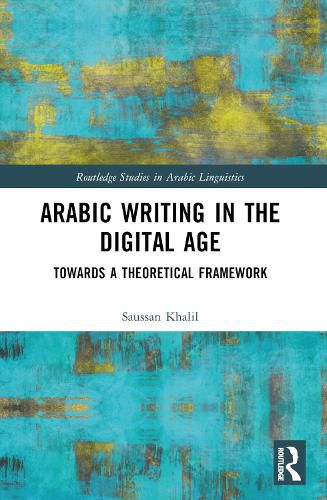Readings Newsletter
Become a Readings Member to make your shopping experience even easier.
Sign in or sign up for free!
You’re not far away from qualifying for FREE standard shipping within Australia
You’ve qualified for FREE standard shipping within Australia
The cart is loading…






The written and spoken forms of Arabic have been traditionally viewed as separate forms of the language that rarely overlap in writing, but this book will examine the recently emerged concept of 'mixed' writing that combines both written and spoken forms.
This book takes a close look at different examples of mixed Arabic writing in modern (twentieth to twenty-firstt century) print and online literature, offering an analysis of this type of mixing alongside a dynamic model for analysing mixed Arabic writing, and the motivations for producing this type of writing. This book further introduces the ground-breaking concept of the seven writing styles for Arabic, ranging from Classical Arabic to ChatSpeak, whilst also offering an overview of early Arabic literacy and children's literature.
Primarily aimed at Arabic researchers and teachers in linguistics, sociolinguistics, identity studies, politics and Teaching Arabic as a Foreign Language, this book would also be informative for undergraduate and postgraduate students studying Arabic as foreign language, Arabic linguistics and dialectology.
$9.00 standard shipping within Australia
FREE standard shipping within Australia for orders over $100.00
Express & International shipping calculated at checkout
The written and spoken forms of Arabic have been traditionally viewed as separate forms of the language that rarely overlap in writing, but this book will examine the recently emerged concept of 'mixed' writing that combines both written and spoken forms.
This book takes a close look at different examples of mixed Arabic writing in modern (twentieth to twenty-firstt century) print and online literature, offering an analysis of this type of mixing alongside a dynamic model for analysing mixed Arabic writing, and the motivations for producing this type of writing. This book further introduces the ground-breaking concept of the seven writing styles for Arabic, ranging from Classical Arabic to ChatSpeak, whilst also offering an overview of early Arabic literacy and children's literature.
Primarily aimed at Arabic researchers and teachers in linguistics, sociolinguistics, identity studies, politics and Teaching Arabic as a Foreign Language, this book would also be informative for undergraduate and postgraduate students studying Arabic as foreign language, Arabic linguistics and dialectology.